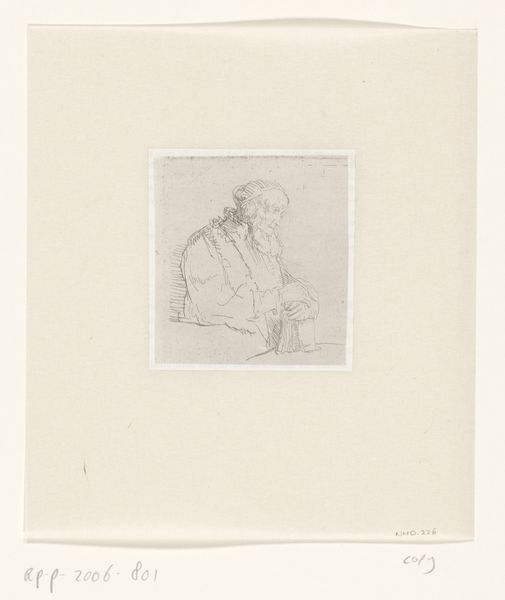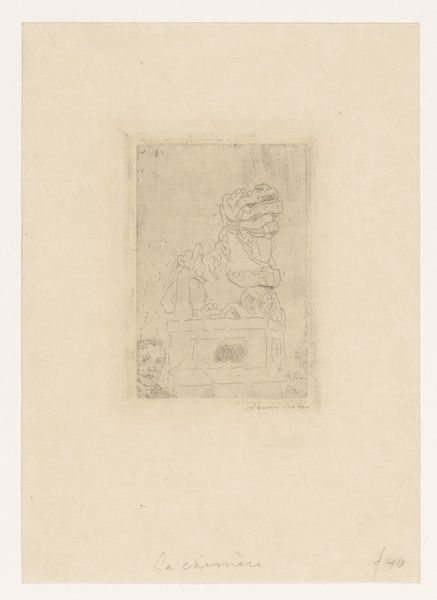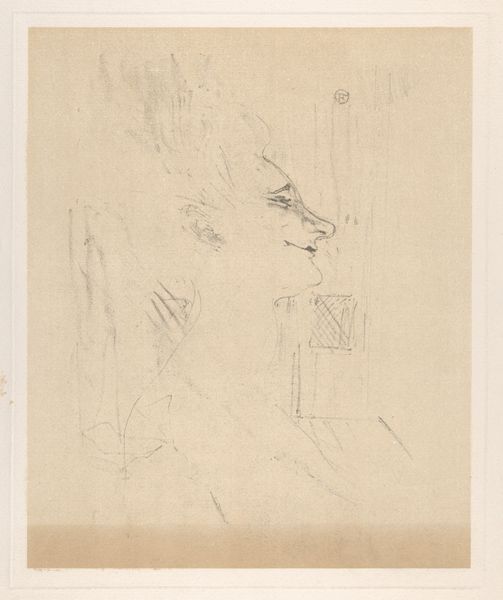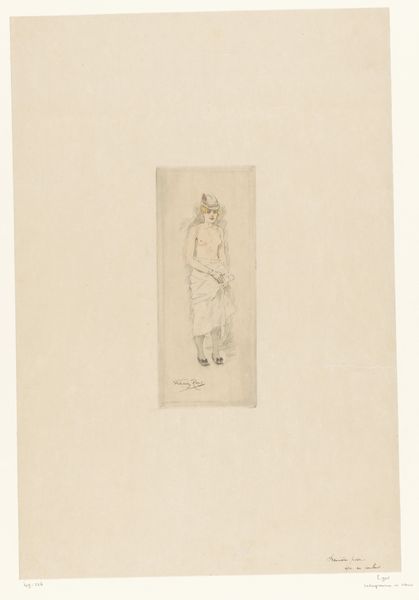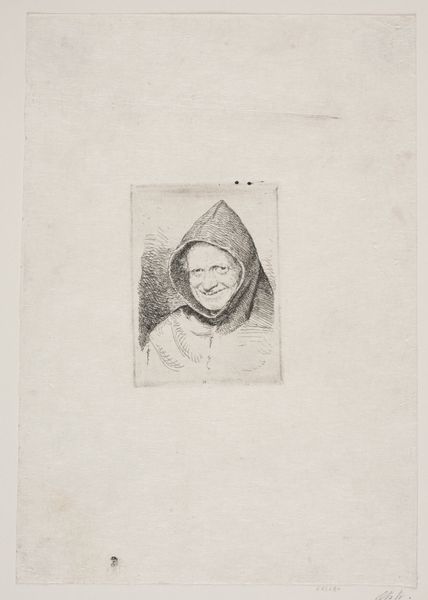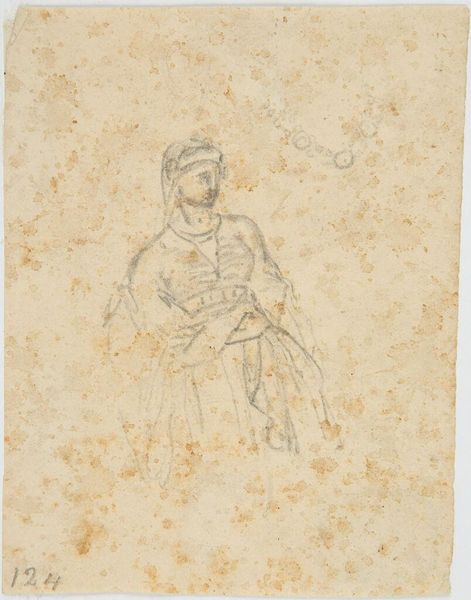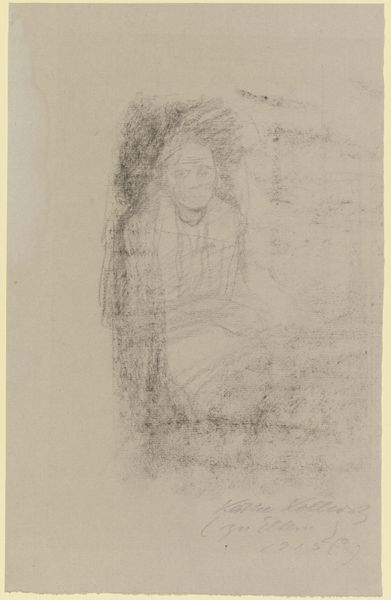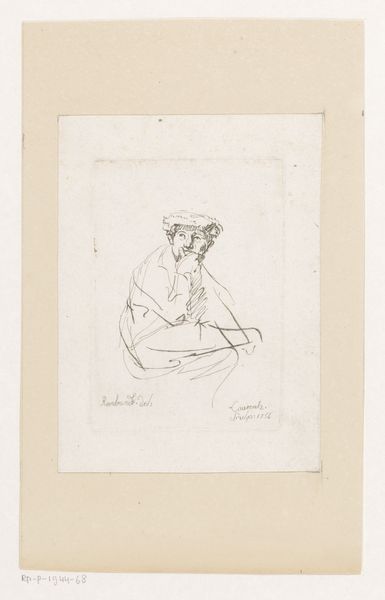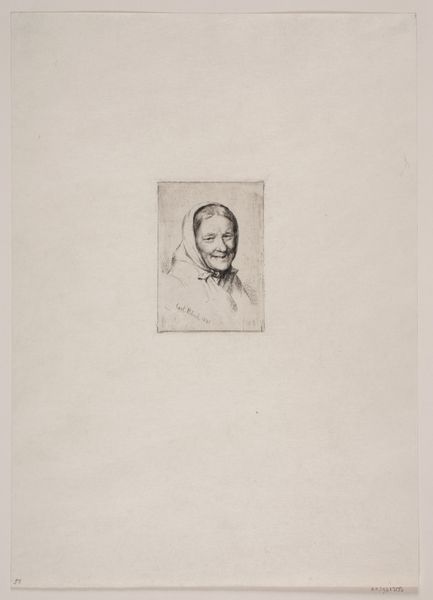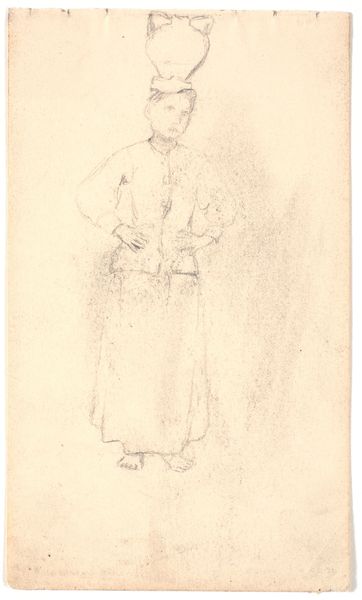
drawing
#
portrait
#
drawing
#
orientalism
#
watercolor
Dimensions: 273 mm (height) x 421 mm (width) (bladmaal)
Curator: Well, here we have Martinus Rørbye’s “Sitting Turk” from 1835, currently held at the SMK, the Statens Museum for Kunst. Editor: It's hauntingly minimal, isn't it? A whisper of a drawing. It’s all tentative lines on this very faded paper, like a half-remembered dream. Curator: Rørbye made this during his travels. He sought to document the East and bring its “exotic” visuals to a European audience. Editor: It's fascinating to think about the production of this work – the paper, the pencil, sourced and manufactured in Europe, traveling across continents. Who made that paper? What kind of labor was involved in producing the materials for this fleeting image of a Turkish man? It really highlights the skewed power dynamics inherent in the colonial gaze, doesn't it? Curator: Skewed, yes, but also imbued with a certain sensitivity. He captures the sitter's calm and dignity. Look at the details of the turban, or the way he holds his pipe – there’s a quiet intensity. Editor: It's the economy of means that really strikes me. A portrait created with such scarcity of mark. It almost feels like an inventory of the colonial encounter— the artist taking only what he can carry. I mean, this drawing itself is so fragile. It speaks volumes about the material cost of these interactions, doesn’t it? Both intended and unintended? Curator: Perhaps. For me it hints more at an ephemeral quality of human interaction and a reminder that even the most carefully rendered observation is filtered through perception. Editor: Agreed. It reminds me how much the value of art depends on networks of labour and commerce, that sometimes become too easily ignored. It goes much deeper than a pretty face. Curator: Indeed. Rørbye invites us to consider how observation is both an act of possession and perhaps of respectful documentation. Editor: An excellent reminder of our deeply flawed yet inevitably interwoven histories and ways of representing one another.
Comments
No comments
Be the first to comment and join the conversation on the ultimate creative platform.

